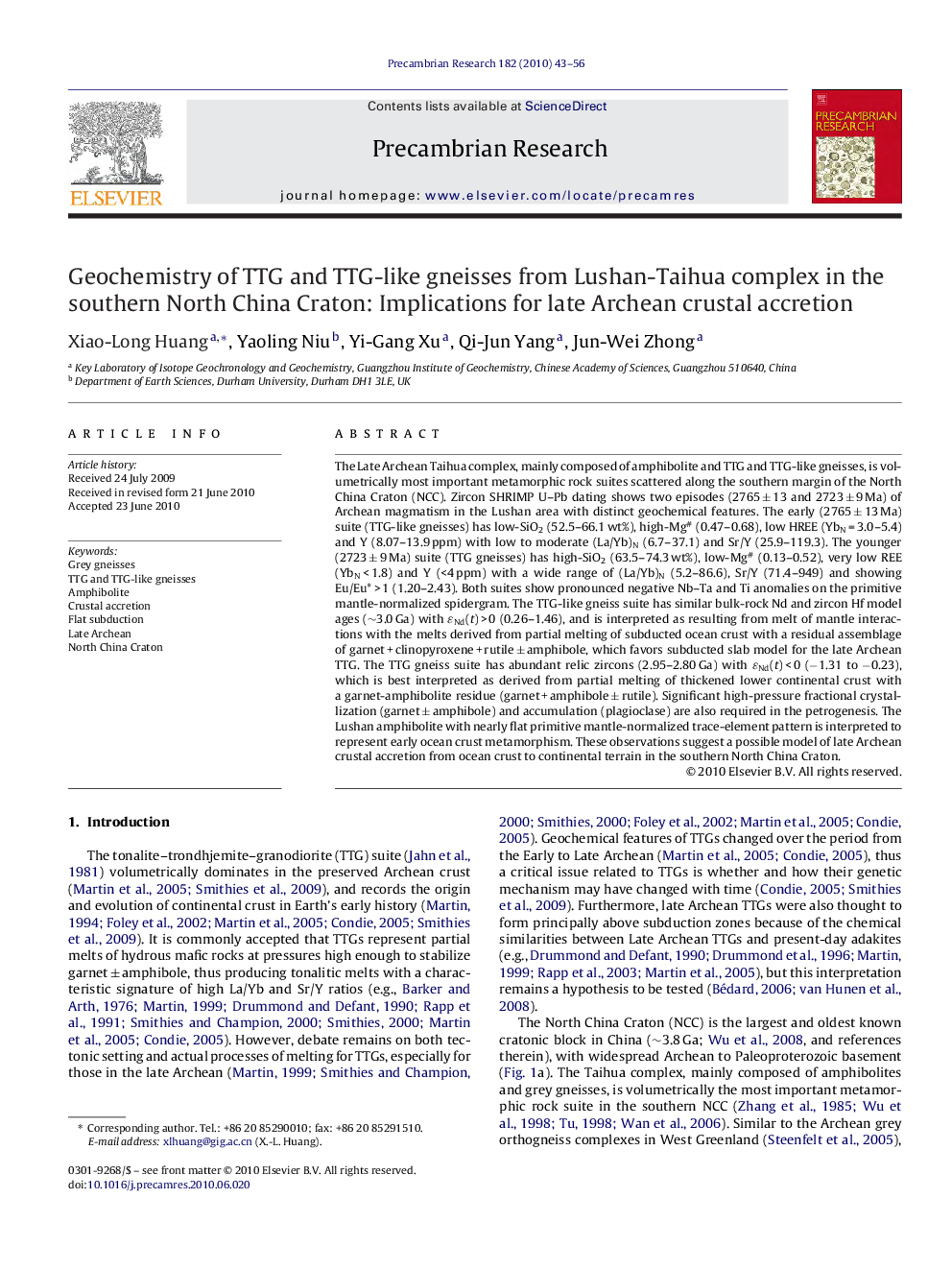| Article ID | Journal | Published Year | Pages | File Type |
|---|---|---|---|---|
| 4723691 | Precambrian Research | 2010 | 14 Pages |
The Late Archean Taihua complex, mainly composed of amphibolite and TTG and TTG-like gneisses, is volumetrically most important metamorphic rock suites scattered along the southern margin of the North China Craton (NCC). Zircon SHRIMP U–Pb dating shows two episodes (2765 ± 13 and 2723 ± 9 Ma) of Archean magmatism in the Lushan area with distinct geochemical features. The early (2765 ± 13 Ma) suite (TTG-like gneisses) has low-SiO2 (52.5–66.1 wt%), high-Mg# (0.47–0.68), low HREE (YbN = 3.0–5.4) and Y (8.07–13.9 ppm) with low to moderate (La/Yb)N (6.7–37.1) and Sr/Y (25.9–119.3). The younger (2723 ± 9 Ma) suite (TTG gneisses) has high-SiO2 (63.5–74.3 wt%), low-Mg# (0.13–0.52), very low REE (YbN < 1.8) and Y (<4 ppm) with a wide range of (La/Yb)N (5.2–86.6), Sr/Y (71.4–949) and showing Eu/Eu* > 1 (1.20–2.43). Both suites show pronounced negative Nb–Ta and Ti anomalies on the primitive mantle-normalized spidergram. The TTG-like gneiss suite has similar bulk-rock Nd and zircon Hf model ages (∼3.0 Ga) with ɛNd(t) > 0 (0.26–1.46), and is interpreted as resulting from melt of mantle interactions with the melts derived from partial melting of subducted ocean crust with a residual assemblage of garnet + clinopyroxene + rutile ± amphibole, which favors subducted slab model for the late Archean TTG. The TTG gneiss suite has abundant relic zircons (2.95–2.80 Ga) with ɛNd(t) < 0 (−1.31 to −0.23), which is best interpreted as derived from partial melting of thickened lower continental crust with a garnet-amphibolite residue (garnet + amphibole ± rutile). Significant high-pressure fractional crystallization (garnet ± amphibole) and accumulation (plagioclase) are also required in the petrogenesis. The Lushan amphibolite with nearly flat primitive mantle-normalized trace-element pattern is interpreted to represent early ocean crust metamorphism. These observations suggest a possible model of late Archean crustal accretion from ocean crust to continental terrain in the southern North China Craton.
